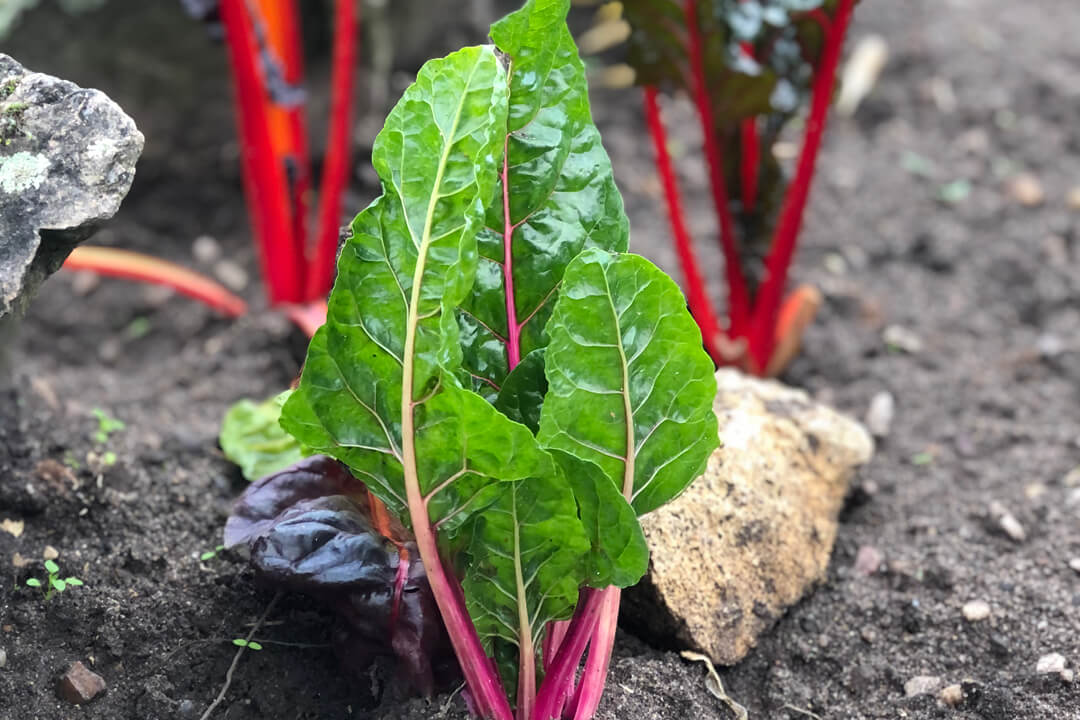Vegetables have a top position
Top restaurants without meat on the menu? They are still few and far between, but some of them have already been awarded Michelin stars. Time for something to change.
First meat, then fish, then vegetables
British chef Fergus Henderson was the first to not only implement the “From Nose to Tail” principle deliciously with his restaurant St. Johns, but also to market it brilliantly.
St. John’s restaurant in Smithfield was and is a bastion of good down-to-earth English cuisine, where everything is made from animals – also out of respect for the animals.
The roasted marrowbones with toast and parsley salad have become a trademark, despite a menu that changes daily. The love of indulgence, the minimalist interior and the optimism that he and his team exude have remained an institution in London since 1995.
The Fish Butchery
Josh Niland uses exactly the same principle in his restaurant Saint Peter in Sydney Australia and processes 90 percent of all parts of a fish. This is far more than using the fillets and, in the best case, a few carcasses to make fish stock, as is usually the case.
His respectful and versatile approach to all parts of the fish has made him famous far beyond Australia. We got to know the likeable chef during his presentation for the Financial Times.
The daughter of a GloriousMe reader in Sydney attended his masterclass evening, where he teaches non-cooking professionals how to handle whole fish, and was thrilled.
If you are still looking for an extraordinary gift for a friend in Australia, click here to book a masterclass.
Leaf to Root
From leaf to root is the principle for vegetables. This is an excellent principle in view of the global shortage of food resources. But when it comes to food, taste must come first.
This is where creativity comes into play. It is relatively easy to score high on the umami scale with a fillet steak, a good sauce and braised mushrooms.

Creating the same explosion of flavor with kale, but without Tuscan bacon and/or smoked sausages, seems more difficult. Simply cut the stalks of kale into small sticks, blanch them briefly and boil them briefly with a little pear syrup. Add salt and finally some pepper and cream: Delicious and easy to cook.
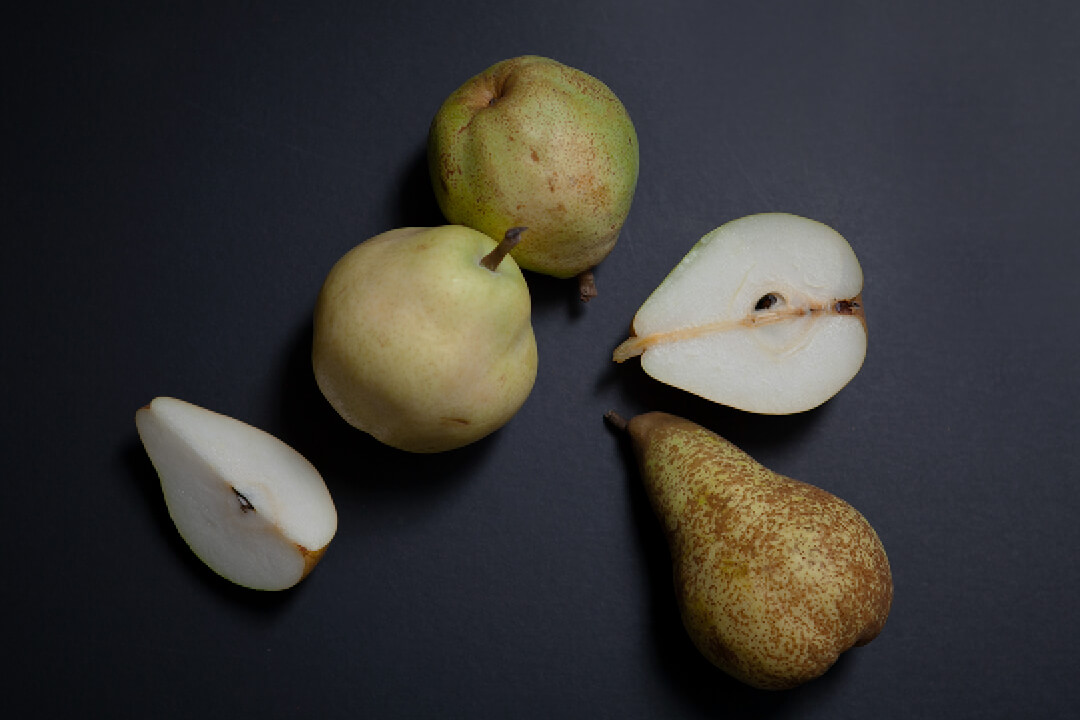
More and more top chefs are proving that it is possible and worth the effort to make vegetables the center of attention.
The inhibition threshold to invest almost 200 euros in an excellent restaurant like Essigbrätlein in Nuremberg for a purely vegetarian menu that starts with celeriac and pear, continues with Brussels sprout crowns and fennel with turnips and ends with the seventh course of sloe ice cream and cocoa beans is high.
Why is that?
While a high price is accepted for stars such as turbot fillet and Wagyu beef, vegetables are only given an extra role, at least in Europe. Rutabaga and root tubers, which are now on the menu in gourmet restaurants, are reminiscent of meagre fare and hunger in times of war.
Root tubers in particular contain a lot of nutrients and a delicious taste. However, extracting this takes more time and effort than finding a good supplier for a dry-aged steak.
The farmer. The gardener. The cook.
A restaurant that serves vegetables at the highest level usually has its own vegetable garden and also farmers and gardeners who are prepared for the fact that these restaurants also like to process what cannot otherwise be sold, for example vegetables that have already been harvested, young crowns of rhubarb, old fruit or vegetables. And preferably all freshly harvested in the morning for the lunch menu.
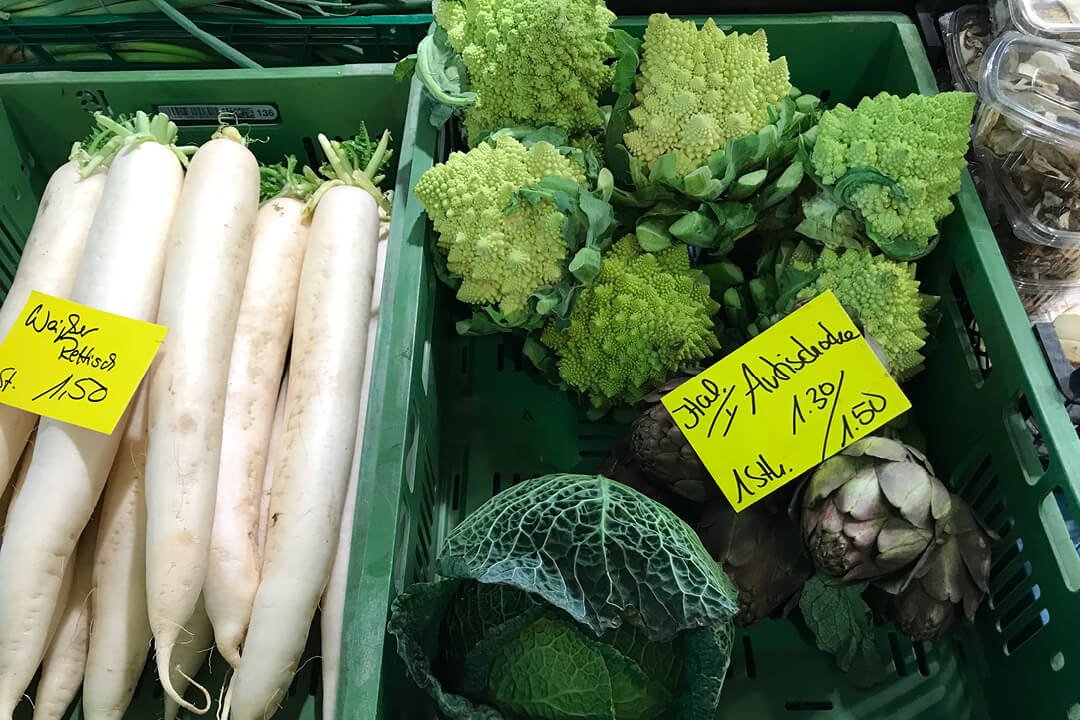
The habit of throwing away taste
In every supermarket there is a large box in the vegetable section where you can dispose of “the green stuff”, such as kohlrabi and carrot leaves, and even the odd greengrocer will ask whether they should dispose of cauliflower leaves and the dark green parts of leeks for the customer.
These parts of the vegetable that either don’t make it to the shelf or are thrown into the box are the parts that contain a lot of flavor and can often be prepared in interesting ways.
Good vegetable cooks love the stalks, which contain the most flavor, whether in parsley or broccoli. However, chips made from kohlrabi leaves or fermented Brussels sprouts are still exotic.
Extravagance or essential for survival
Anyone can enjoy delicious vegetables without visiting a restaurant that celebrates vegetables and has been awarded stars in the Michelin Guide.
We hope that vegetables will increasingly take a leading position on the plate. For one thing, the principle of using as much as possible applies equally to meat, fish and vegetables.
Secondly, there is a danger that the brave farmers who grow local, organic fruit and vegetables, cultivate old varieties and sell their goods on the market or in farm stores will be lost in the cost increases that we are all experiencing at the moment. They need customers to survive.
If they no longer exist, anyone who doesn’t have the luxury of their own vegetable garden can only look sadly at plastic-wrapped heads of broccoli on the supermarket shelf.
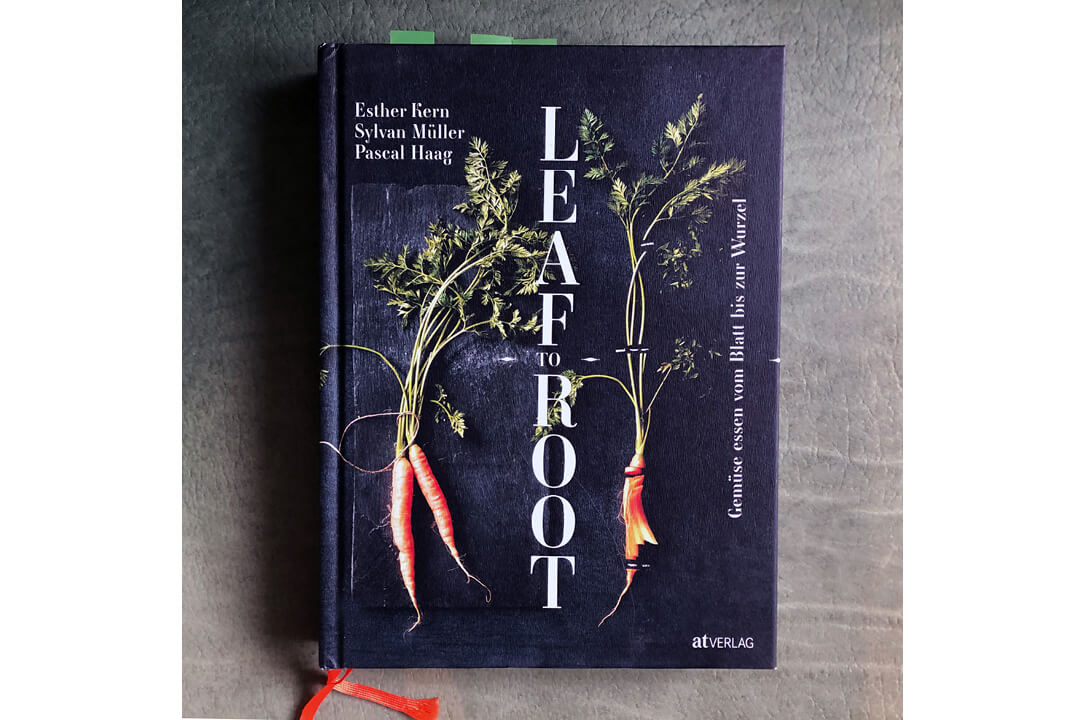
Our recommendation to get started
The excellent book LEAF TO ROOT by Esther Kern, Sylva Müller and Pascal Haag whets the appetite for using far more vegetables than usual.
It contains interesting interviews with three extraordinary chefs from Germany, Switzerland and Austria who experiment with vegetable preparations, as well as a conversation with a food chemist, because there is often a little fear that unfamiliar vegetables could be poisonous.
The book LEAF TO ROOT provides many ideas for a new appreciation of vegetables and also contains excellent recipes for trying out new ways of preparing them. For example, using the dark parts of the leek with barberries to make a delicious rice or trying potato and broccoli patties.
The majority of the recipes only require a few ingredients. The interesting insights in the book make it a pleasure to read, regardless of the preparation considerations. With its interesting typography and excellent photographs, it is a delight for any visual aesthete.
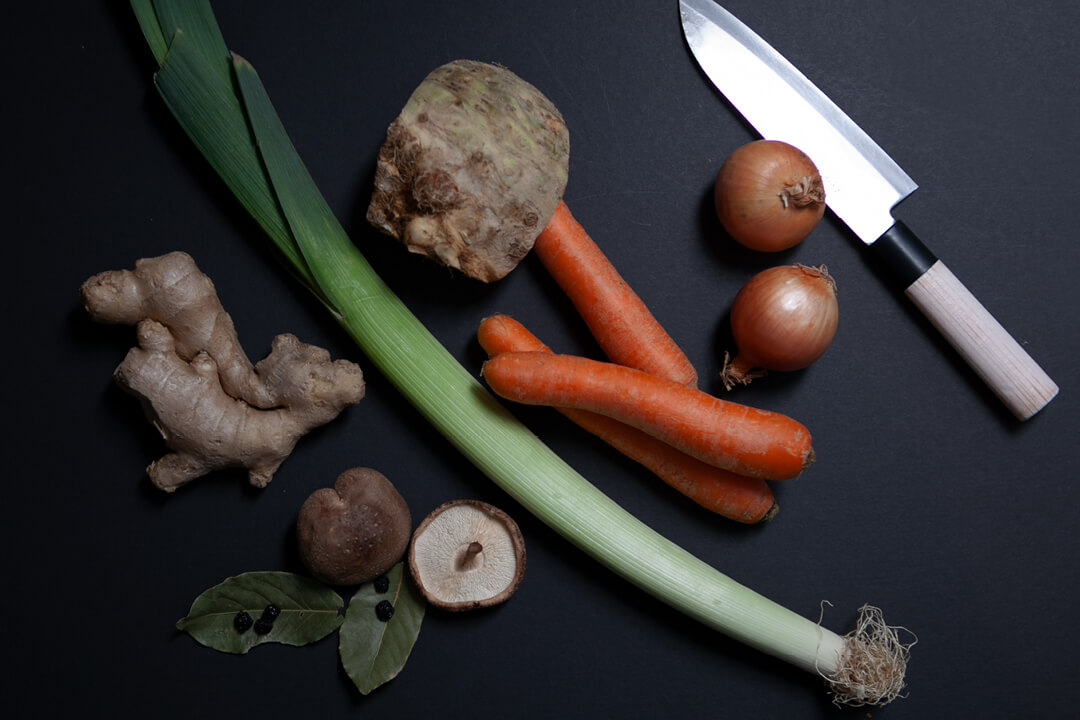
If you want to get started right away, cook your next vegetable stock without any sections:
Wash the carrots, leeks and celeriac and chop them into large pieces. To preserve the flavor, do not peel the vegetables and be sure to leave all the dark green parts of the leek. Halve the onions (also with the skin on) and place all the pieces in the oven to roast at 200 degrees for about 20 minutes.
Once the vegetables have a nice roasted aroma, they are placed in a pan with pieces of ginger, juniper berries, a bay leaf and some dried shitake mushrooms, covered with cold water and left to simmer gently for 2 hours. The broth is seasoned with miso paste and soy sauce.

Treat yourself to a good soy sauce
Soy sauce is made by fermenting soybeans. You can use the well-known industrial product, where the “fermentation” only takes a few hours and the taste is achieved through a series of additives, or you can use a high-quality soy sauce in your own kitchen.
You don’t even have to be able to read Japanese characters, which would enable you to familiarize yourself with the intricacies of the extensive range of Japanese soy sauces, but you can simply have Tomasu soy sauce, which is produced just outside Rotterdam and fermented for three years, sent to your home online.
We have already tried several varieties of Tomasu soy sauce and are delighted. After that, you no longer want a quick soy sauce factory product in your bowl.
At the beginning and at the end
Fermentation, the preservation of food by means of lactic acid fermentation, is an ancient method that was important when there were no refrigerators. Fermented foods such as the well-known sauerkraut or the Korean white cabbage, kimchi, to name just two, are real health packages.
Chefs love fermented vegetables because fermentation provides an interesting flavor component.
As you probably don’t run a kitchen brigade and don’t have much time to ferment vegetables yourself, we recommend a visual delicacy to conclude our plea for vegetables: ARTE shows the Buddhist nun Jeong Kwan, who is now famous in gourmet circles, preparing vegetables and using the huge clay jugs in which she ferments sauces.
The friendly abbess of the Baegyangsa temple lives with two other nuns in the Chunjinam Hermitage, about an hour’s drive from Seoul. Watching her frying flowers in rice flour in the middle of the Korean mountain landscape is a visual treat.
Accompany the nun to the field and the forest in this ARTE film. After this wonderful movie, you will see vegetables with completely different eyes.

#Advertising #ProductPlacement #IndependentRecommendation #BecauseWeLoveIt
Photographs © GloriousMe

